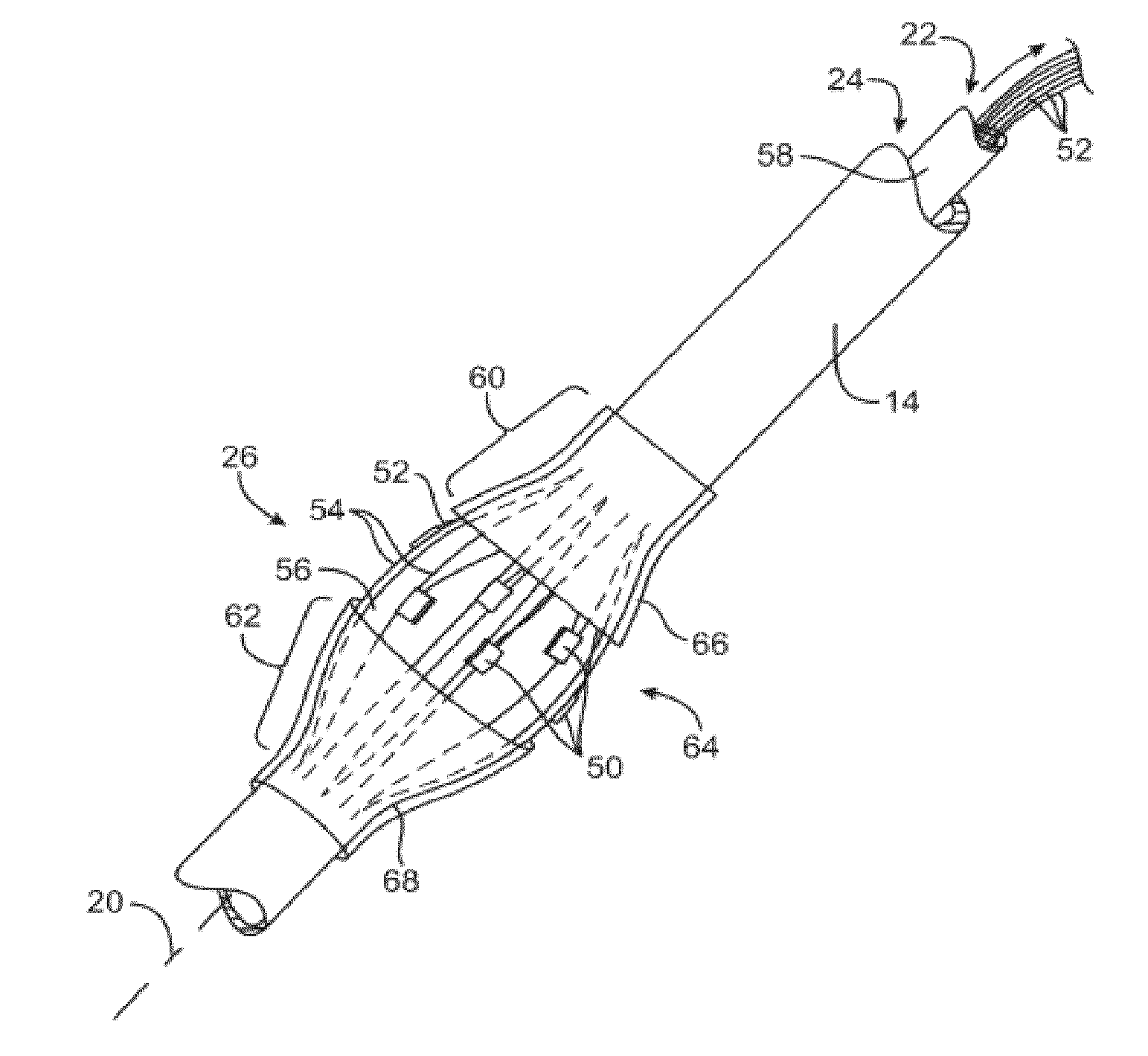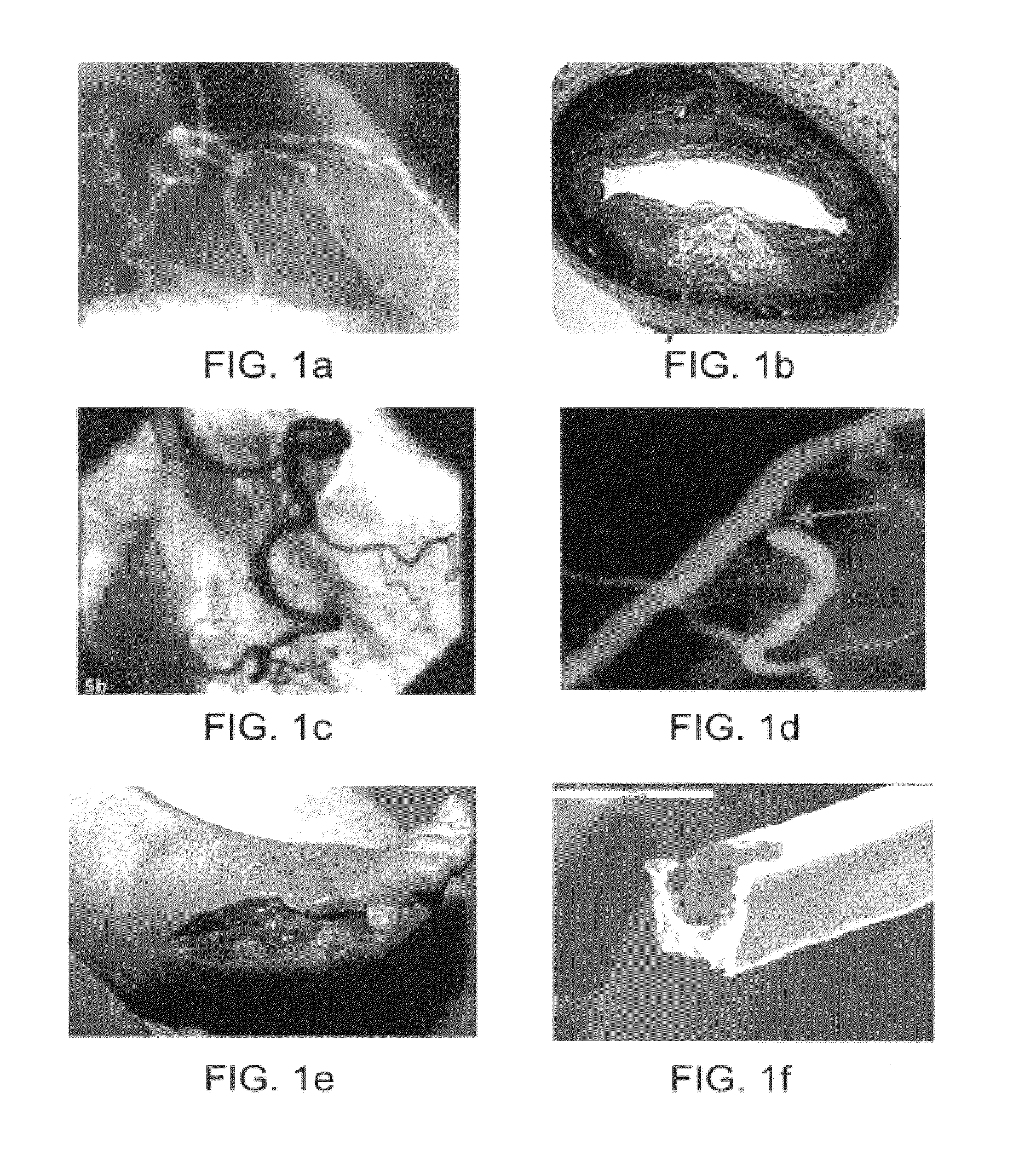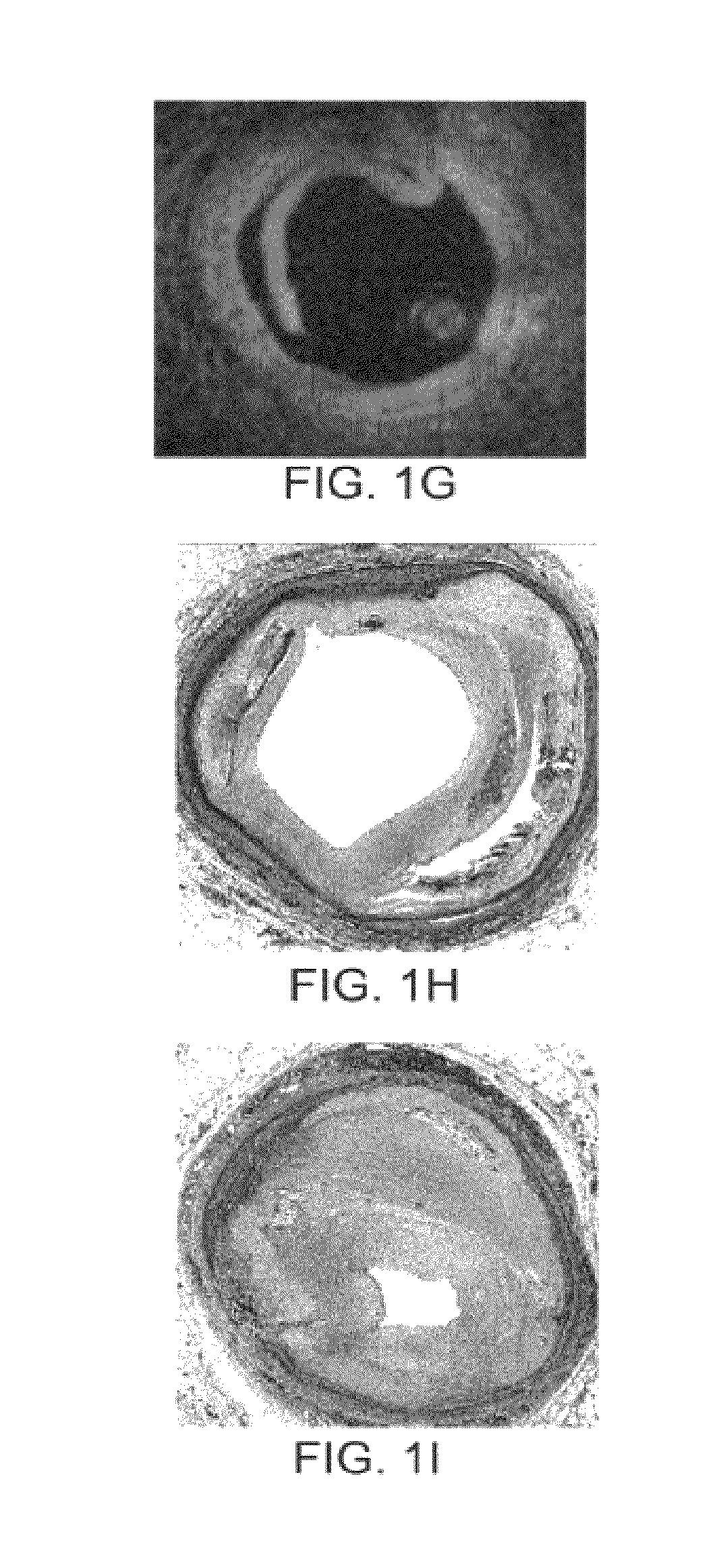Apparatus and Method for Treatment of In-Stent Restenosis
a technology of in-stent restenosis and apparatus, applied in the field of medical devices, systems and methods, can solve the problems of inability to achieve the effect of reducing the size of the vessel lumen, limiting the heating of the target tissue, and limiting the treatment options of the in-stent restenosis
- Summary
- Abstract
- Description
- Claims
- Application Information
AI Technical Summary
Benefits of technology
Problems solved by technology
Method used
Image
Examples
Embodiment Construction
[0107]The present invention provides devices, systems, and methods to treat and / or analyze luminal tissue or tissues proximate to a lumen. The anatomical structure into which the catheter is placed may be, for example, the esophagus, the oral cavity, the nasopharyngeal cavity, the auditory tube and tympanic cavity, the sinus of the brain, the arterial system, the venous system, the heart, the larynx, the trachea, the bronchus, the stomach, the duodenum, the ileum, the colon, the rectum, the bladder, the kidney, the liver, the ureter, the ejaculatory duct, the vas deferens, the urethra, the uterine cavity, the vaginal canal, and the cervical canal. The invention will be particularly useful for characterizing and treating materials along an artery, such as to open the artery lumen and increase blood flow, further including stenosis developed as a result of prior stent implantation. Remodeling may involve the application of electrosurgical energy, typically in the form of radiofrequenc...
PUM
 Login to View More
Login to View More Abstract
Description
Claims
Application Information
 Login to View More
Login to View More - R&D
- Intellectual Property
- Life Sciences
- Materials
- Tech Scout
- Unparalleled Data Quality
- Higher Quality Content
- 60% Fewer Hallucinations
Browse by: Latest US Patents, China's latest patents, Technical Efficacy Thesaurus, Application Domain, Technology Topic, Popular Technical Reports.
© 2025 PatSnap. All rights reserved.Legal|Privacy policy|Modern Slavery Act Transparency Statement|Sitemap|About US| Contact US: help@patsnap.com



